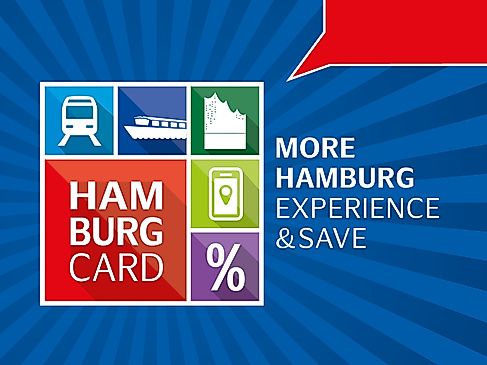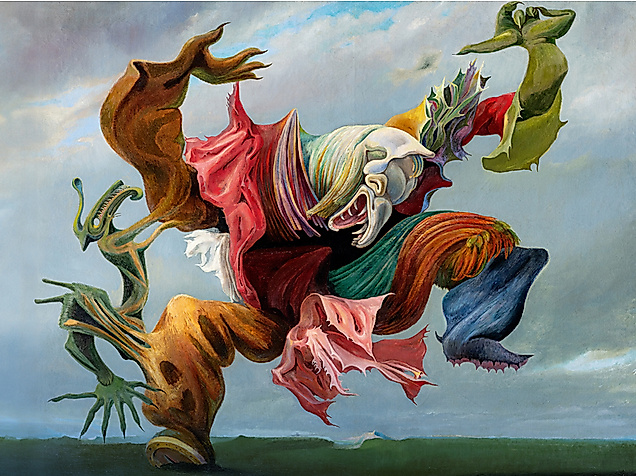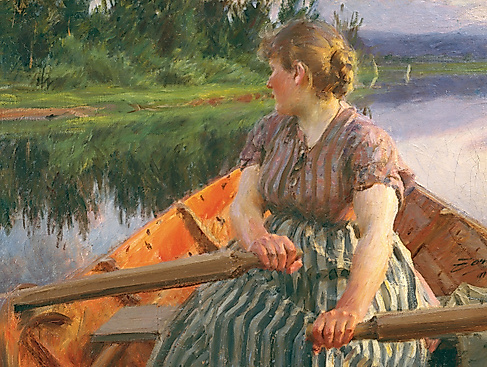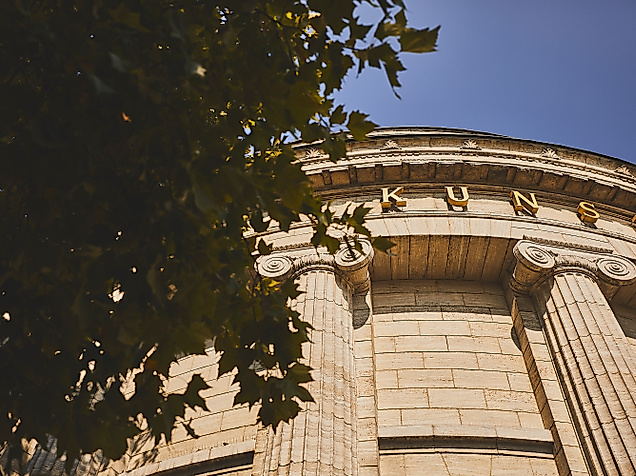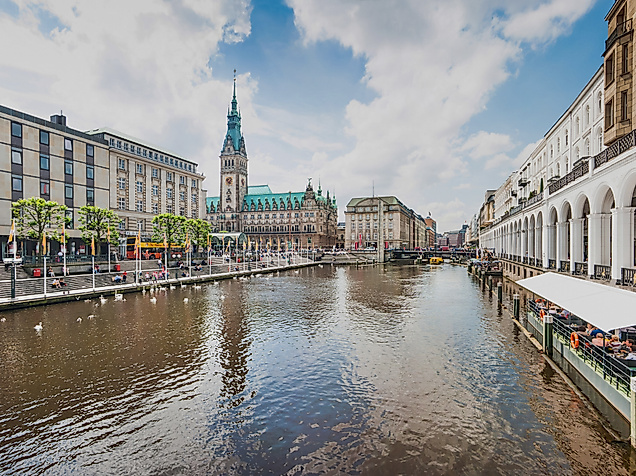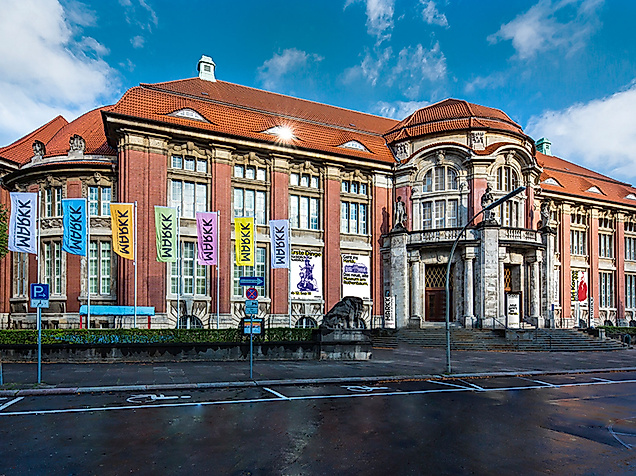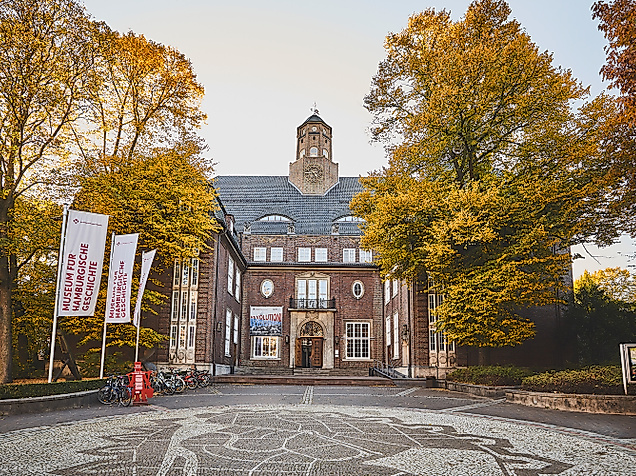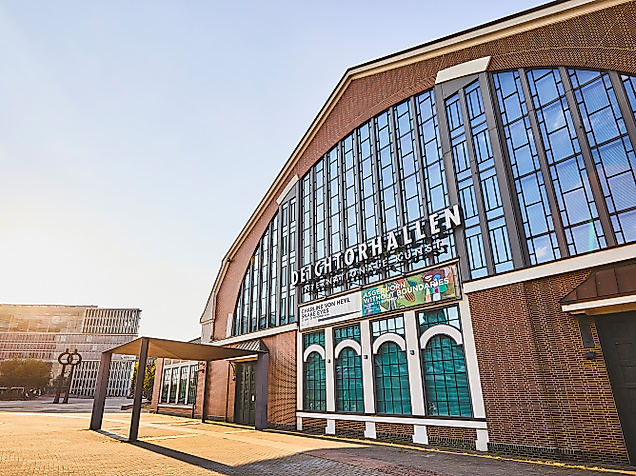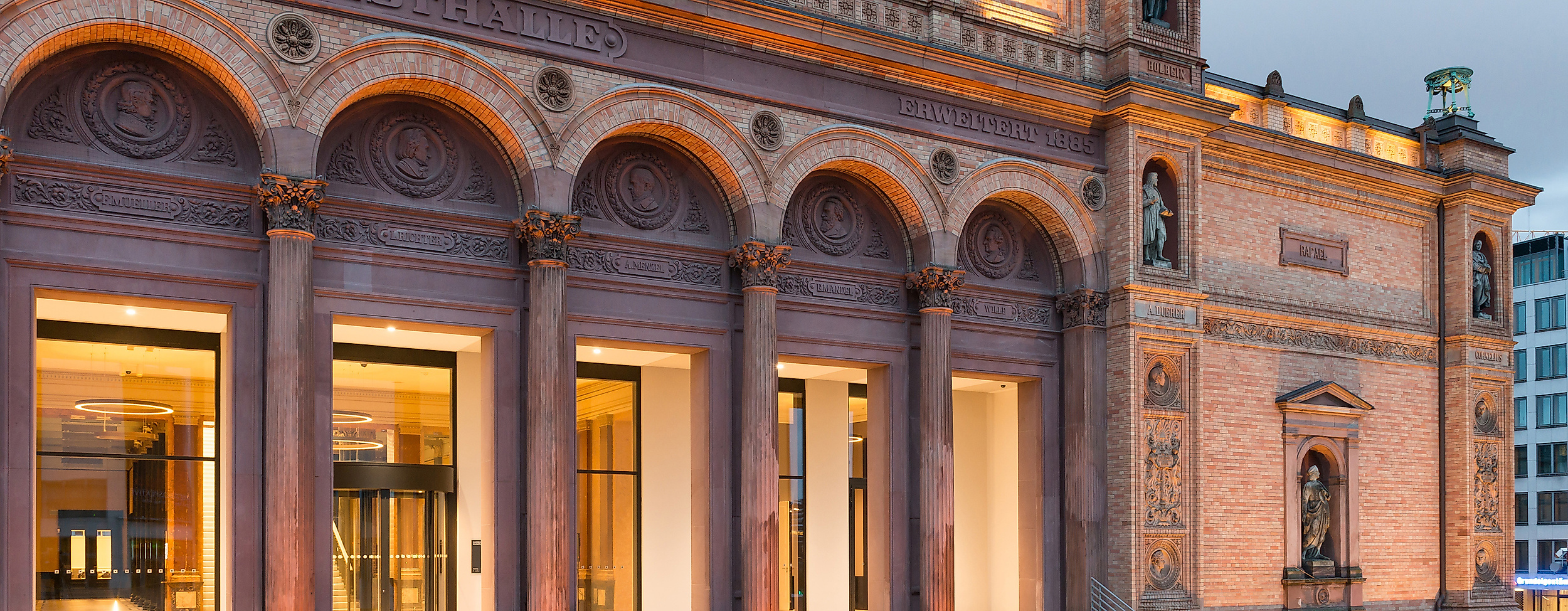

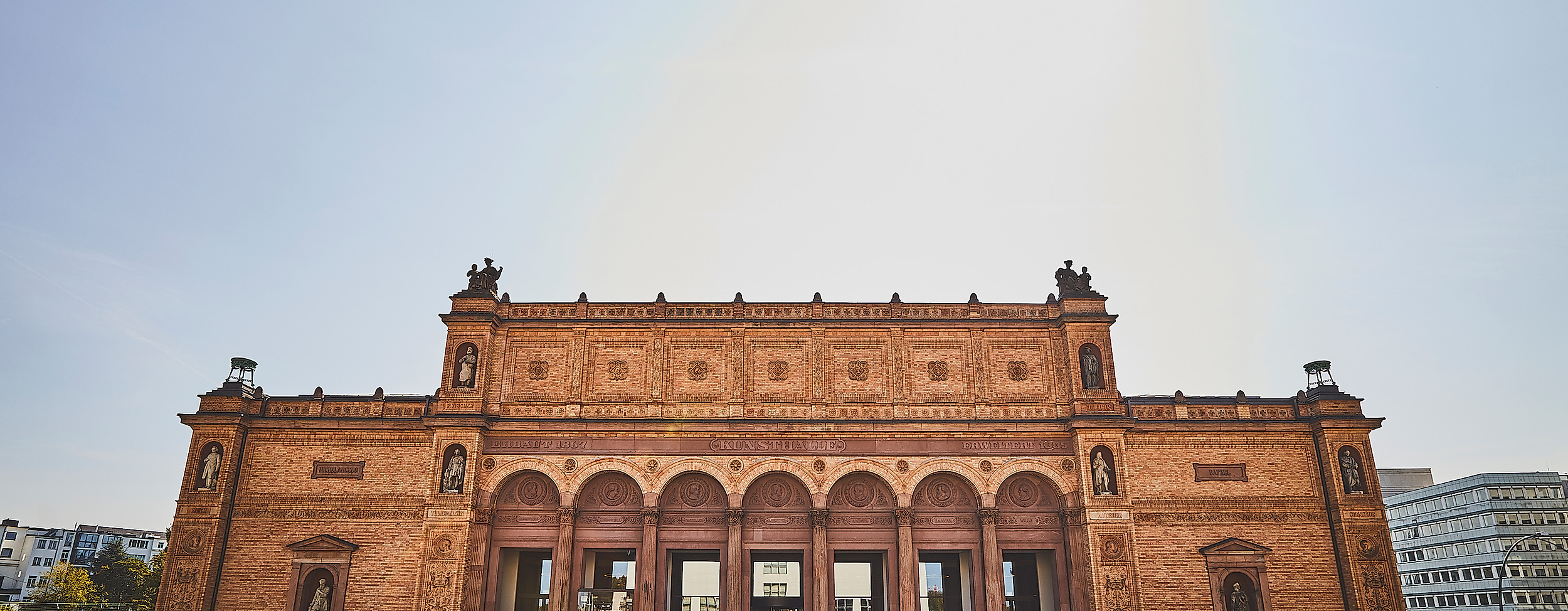
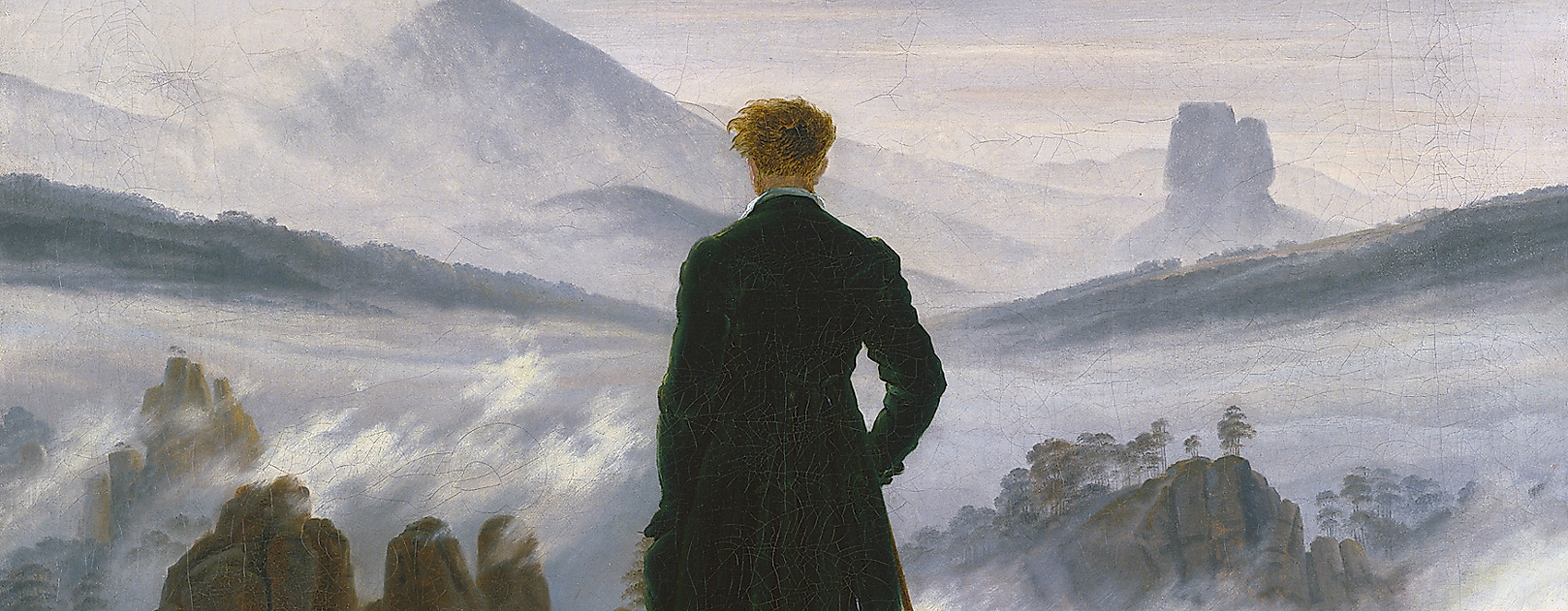
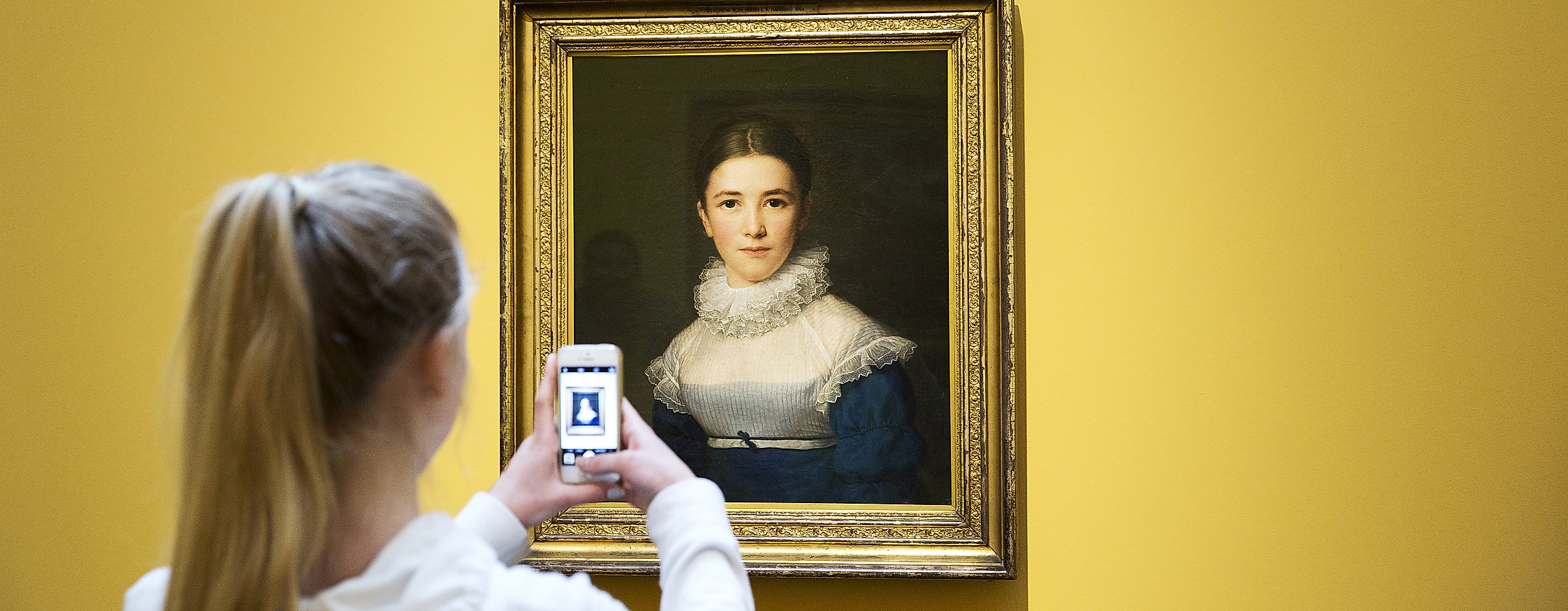
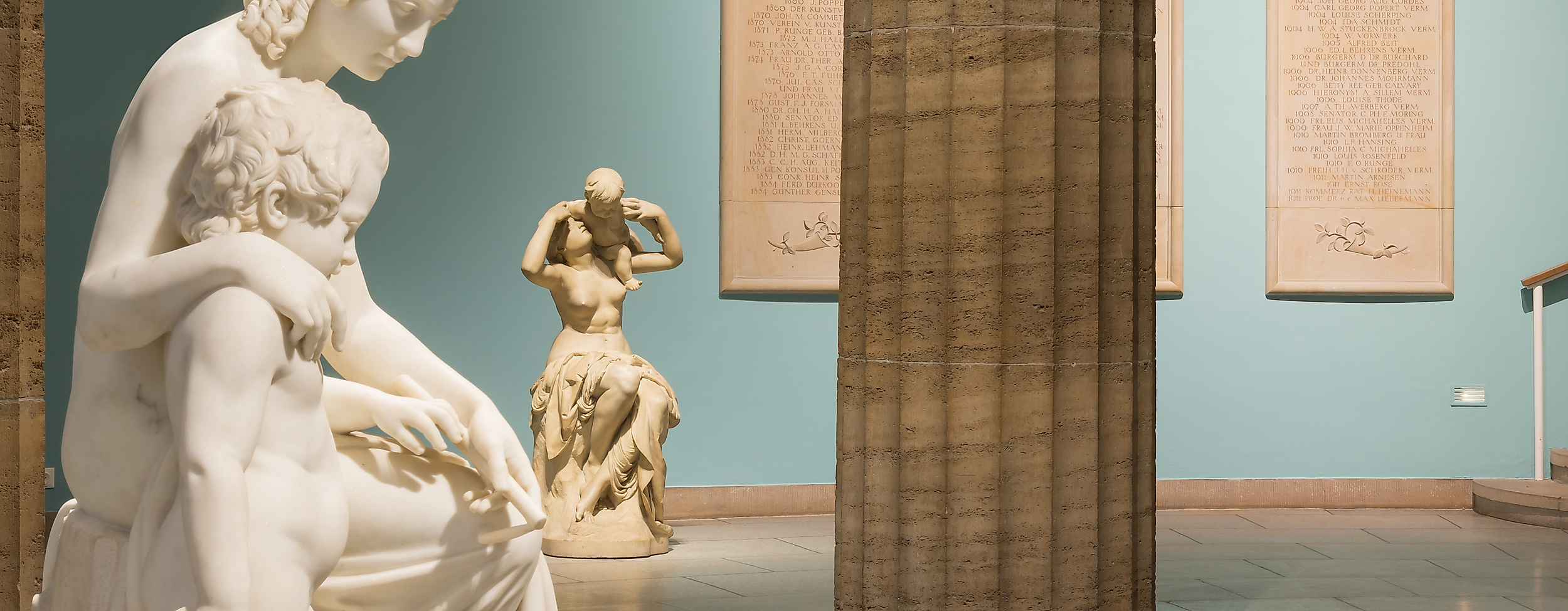
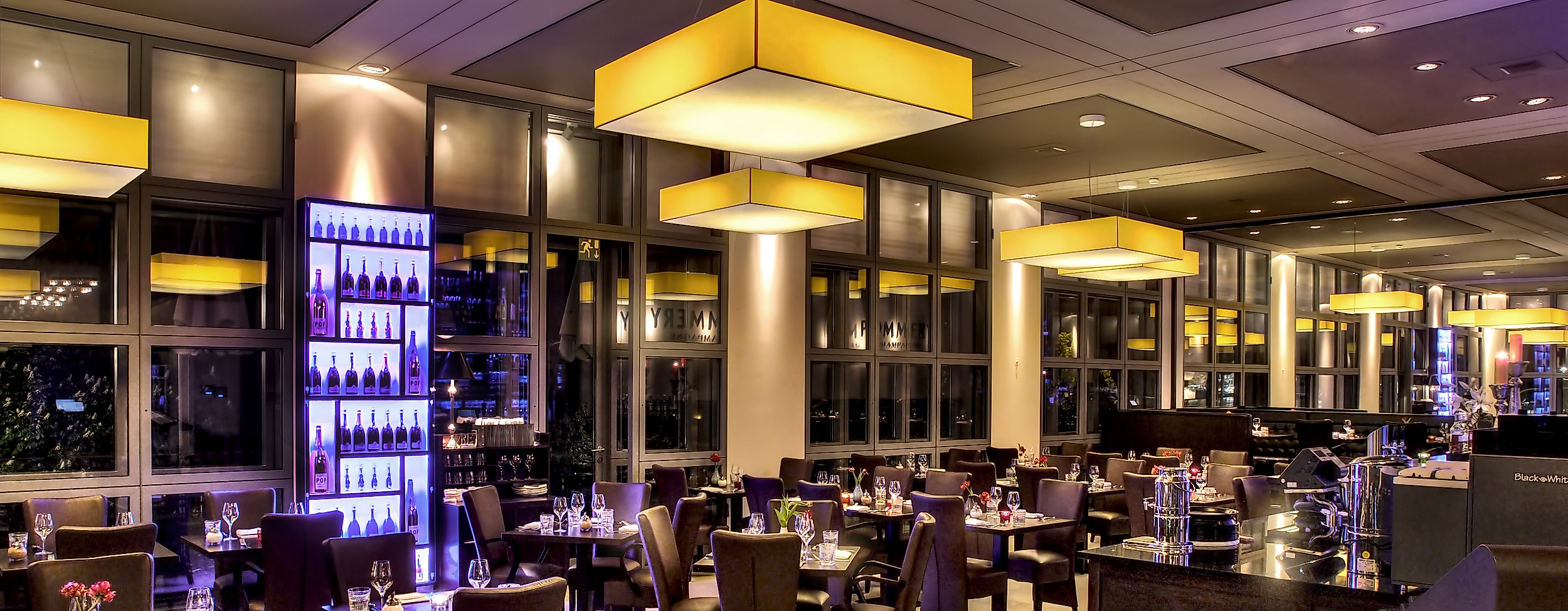
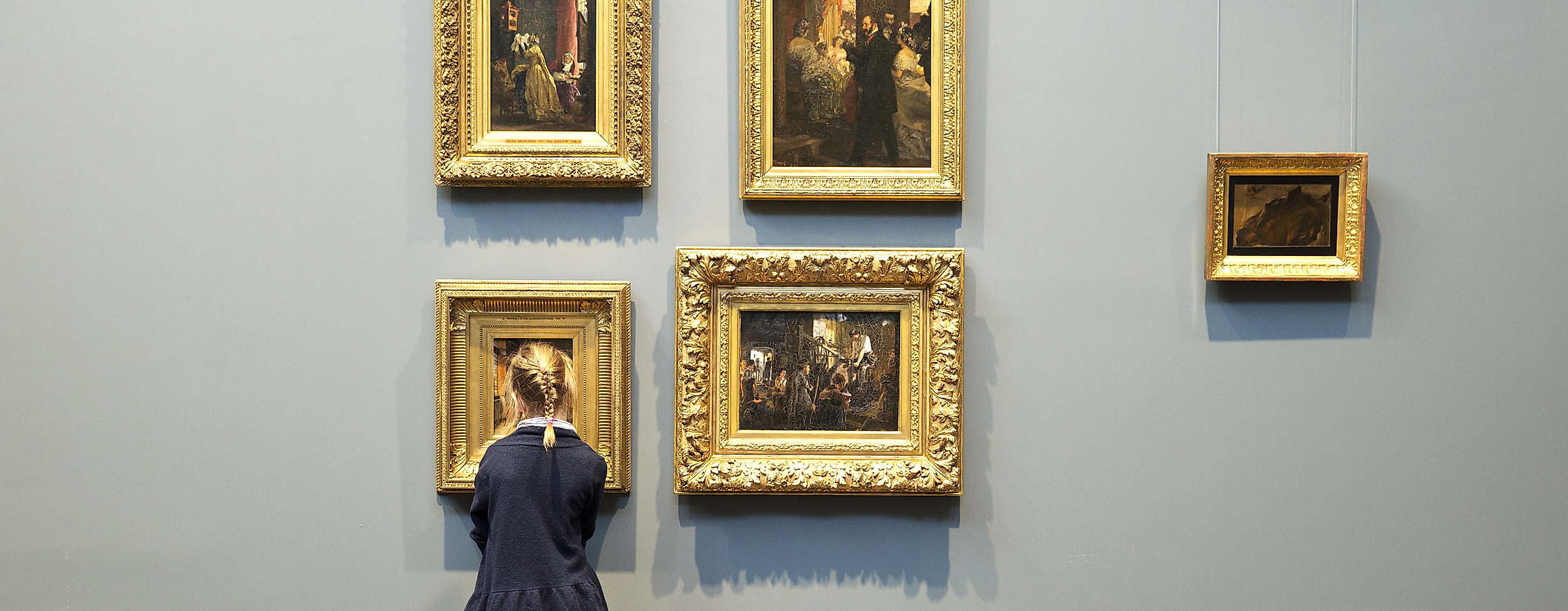
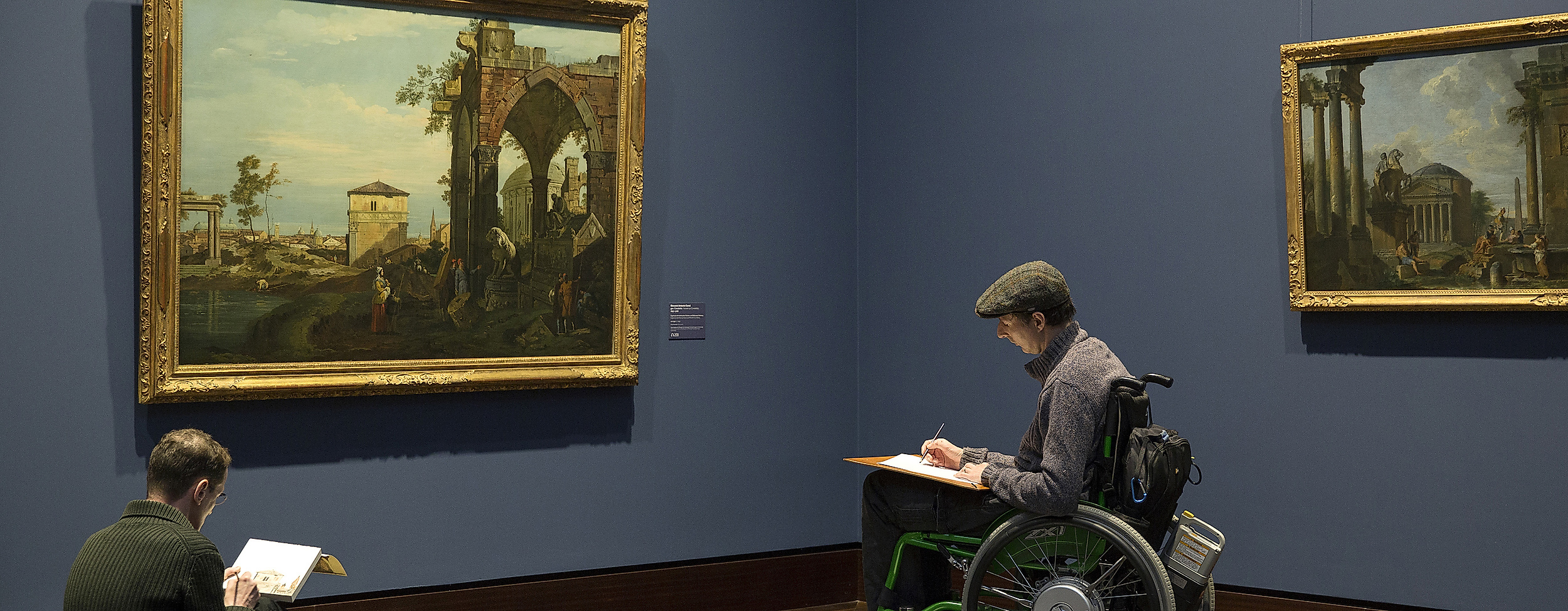
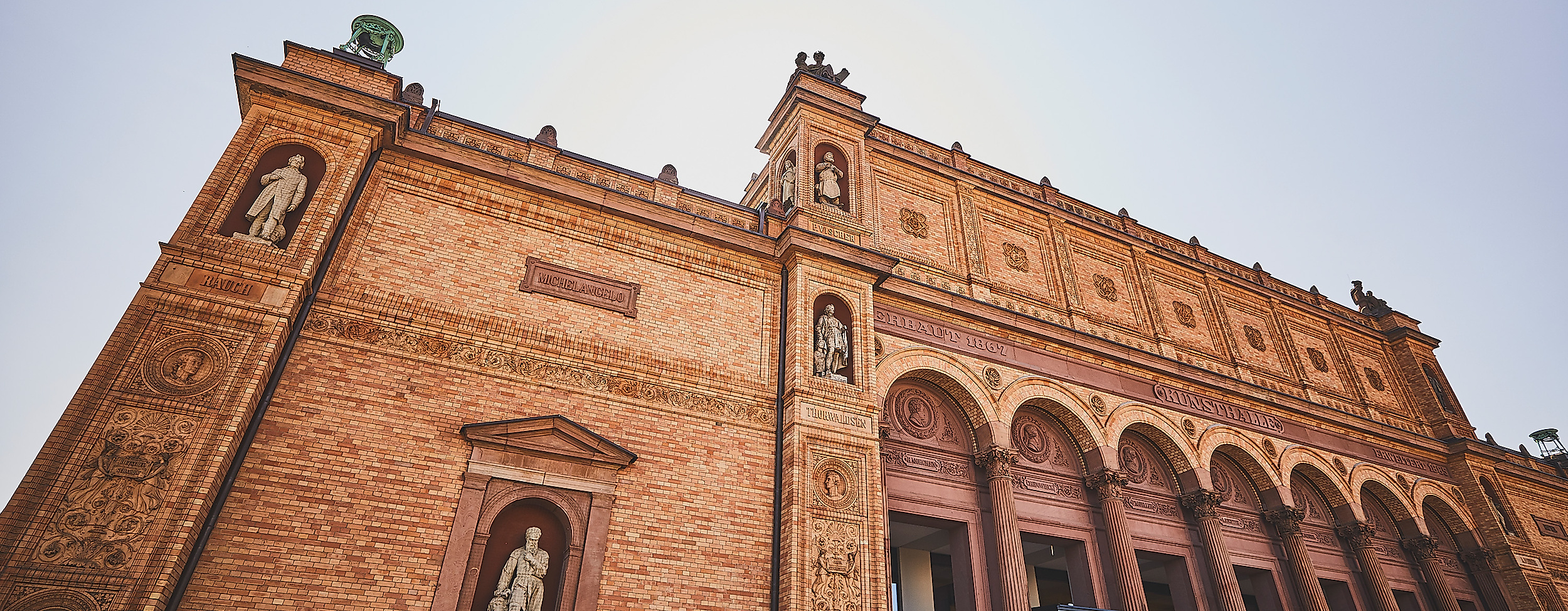
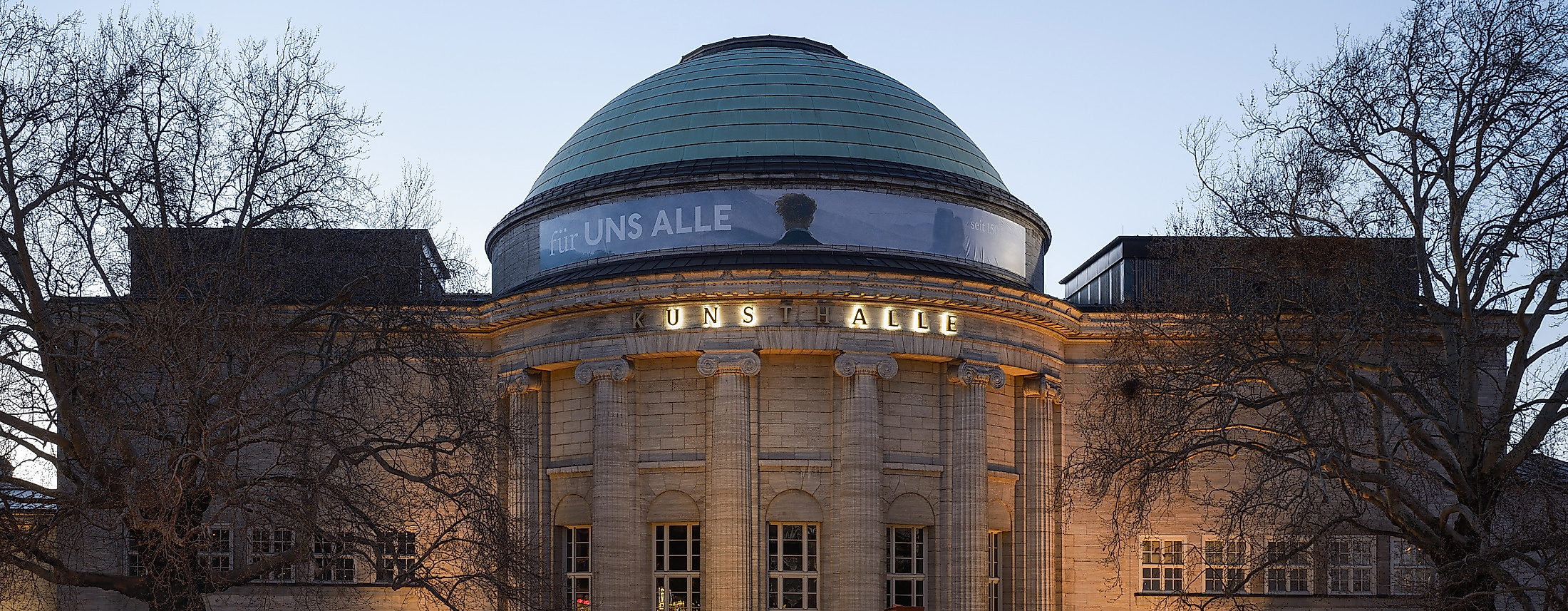
Hamburger Kunsthalle
From antique to contemporary to modern.
The Hamburger Kunsthalle is one of the most important and largest art museums in Germany. Its first-class collection takes visitors through 8 centuries. In 2019, it celebrated a round birthday: 150 years ago, the Kunsthalle was opened to the public.
After members of the Hamburg art association committed themselves to supporting an art museum in the Hanseatic City in 1846, the collections were opened to the public as early as 1850. The construction of the Hamburg Kunsthalle was financed through donations from Hamburg's citizens and was opened in 1869. The various collections continue to be expanded even today, thanks to foundations such as the "Campeschen Historischen Kunststiftung" and the museum friends "Freunde der Kunsthalle e. V.". The Kunsthalle Hamburg is not only committed to contemporary art, but also focuses on the conservation of older art.
Two Exceptional Special Exhibitions in 2025
The Hamburger Kunsthalle is presenting two outstanding special exhibitions in 2025: "Surrealism and German Romanticism: A Rendezvous of Dreams" and "Anders Zorn: Sweden’s Superstar".
"Surrealism and German Romanticism" brings together two artistic movements in a fascinating dialogue. While Romanticism captivates with its longing, connection to nature, and melancholy, Surrealism focuses on the unconscious, the dreamlike, and the irrational. Masterpieces by Caspar David Friedrich, Max Ernst, Salvador Dalí, and other artists illustrate how fantasy, emotions, and visions have been artistically interpreted across centuries.
With "Anders Zorn: Sweden’s Superstar", the Kunsthalle dedicates an exhibition to one of Sweden’s most important artists. Zorn was renowned for his masterful watercolors, striking portraits, and atmospheric landscapes. His works are distinguished by their virtuoso technique and extraordinary use of light, making him one of the most sought-after painters of his time.
Free time slot tickets for both exhibitions must be booked online with the Kunsthalle in advance to guarantee admission.
Three buildings. A breathtaking experience.
The Kunsthalle Hamburg consists of three distinctive buildings: the ornamentally decorated brick structure from 1869, the neo-classical annex of light-coloured limestone from 1919, and the white cube of the "Galerie der Gegenwart" (gallery of the present) by the architect Oswald Mathias Ungers that opened in 1997. With its central location between the central station and the Alster, the Kunsthalle also represents an architectural highlight.
One of the loveliest views of the city is offered by the bistro of the Galerie der Gegenwart which caters for the culinary enjoyment of visitors together with Café Liebermann in the historic part of the museum.
The Collections of the Kunsthalle Hamburg
The Old Masters collection focuses on four areas in particular: North German Art around 1400, Dutch painting of the 17th century, Italian painting from 1350 to 1800 and French painting of the 17th to 18th century. Paintings by Old Masters can be seen such as Rembrandt, Lucas Cranach the Elder and Rubens. The gallery of the 19th century is one of the most important collections of this period, beginning with works by Romantic artists and closing with German Impressionism. Here can be found paintings by artists such as Paul Cezanne, Claude Monet and Edouard Manet.
The outstanding collection of classic modern art has works by Max Beckmann and Edvard Munch. Also hanging in the gallery are works by the "Blauer Reiter" and the "Brücke" groups considered during the Nazi period to be "degenerate"; some works from this time have vanished. Further highlights are Dutch paintings from the 17th century, with works by Rembrandt and Ruisdael, paintings of the German Romantic period with a comprehensive group of works by Caspar David Friedrich and Philipp Otto Runge, and important works by Adolph Menzel and Max Liebermann.
Since that time, the Kunsthalle Hamburg has endeavoured constantly to expand this collection. Also to be found in the Kunsthalle Hamburg are a media collection, a collection of copper engravings and the "Galerie der Gegenwart" which exhibits art from 1960 to the present. In addition to the collection, Hamburger Kunsthalle receives international attention with its prestigious special exhibitions which attract thousands of Hamburg visitors each year.
Experience sustainability
The Hamburger Kunsthalle is actively committed to a sustainable cultural experience. On the one hand, it supports the project Hamburger Kulturschlüssel and the association KulturLeben Hamburg by donating admission tickets and thus promoting social participation. Because culture should be accessible for everyone - for people with disabilities, for people with a low income, for people of all ages. In addition, the gift shop focuses on regional production. Many gifts and souvenirs are primarily produced in cooperation with sheltered workshops in order to establish inclusion on the one hand and to keep transport routes as low-emission as possible on the other.
Welcome, families!
There’s plenty to keep our younger visitors entertained too. At the Hamburger Kunsthalle, children aged 5 and up can discover interactive art experiences together with their families. During the weekly Family Time and holiday workshops, they paint, create, and experiment. All activities are led by experienced art educators.
Renowned artist Olafur Eliasson has created something truly special on the ground floor of the Gallery of Contemporary Art: a space for seeing, experiencing, and playing, where children and adults can explore art up close together. The room features a clever construction game that allows everyone to design and exhibit their own sculptures. Works by old and modern masters, along with a variety of sensory play stations, inspire visitors to invent new forms again and again.
Admission is free for children and young people under the age of 18.
Hamburg CARD Benefit
Tickets
31 % discount
You can purchase a discounted ticket from us in advance here.
Special prices apply for special exhibitions.
Show your valid Hamburg CARD at the cash desk and on request on the day of use. Duplication of discounts not possible.
Top customer reviews
Search
Languages
Google translator for other languages
Please note that this is an automatic translation.
For better information, you can always switch to the German or English version










